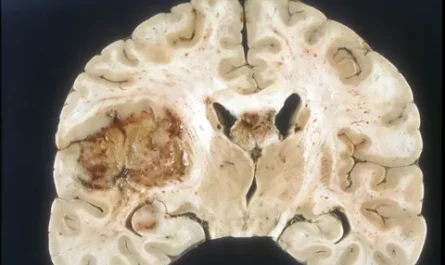Researchers at Yale University have identified a potential drug target that may help alleviate joint degeneration associated with osteoarthritis. Osteoarthritis is a debilitating condition that affects an estimated 30 million people in the United States alone. The findings of the study were published in the journal Nature.
Currently, pain relievers and lifestyle modifications, such as exercise and weight loss, are the most common treatments for managing joint stiffness and pain caused by osteoarthritis. However, there is a pressing need for therapies that can prevent the breakdown of joints, a key characteristic of this degenerative disease.
Specialized proteins known as sodium channels play a role in generating electrical impulses in excitable cells within muscles, the nervous system, and the heart. Previous research conducted by Stephen G. Waxman at Yale identified the significant role of a specific sodium channel called Nav1.7 in the transmission of pain signals.
In the recent study, researchers from the laboratories of Chuan-Ju Liu, the Charles W. Ohse Professor of Orthopedics, and Stephen G. Waxman, the Bridget M. Flaherty Professor of Neurology, Neuroscience, and Pharmacology, found that Nav1.7 channels are also present in non-excitable cells responsible for producing collagen and maintaining joint health.
Osteoarthritis, the most common form of arthritis, is characterized by the breakdown of cartilage that cushions the joints and reduces friction. It primarily affects the hands, hips, and knees.
The researchers deleted the Nav1.7 genes from collagen-producing cells in mice, leading to a significant reduction in joint damage in two osteoarthritis models. Additionally, they found that drugs used to block Nav1.7, including carbamazepine—a sodium channel blocker typically used to treat epilepsy and trigeminal neuralgia—provided substantial protection against joint damage in the mice.
According to Stephen G. Waxman, the function of sodium channels in non-excitable cells has been a mystery until now. This study sheds light on how a small number of sodium channels can effectively regulate the behavior of non-excitable cells.
The findings of this study open up new possibilities for developing disease-modifying treatments, explained Wenyu Fu, a research scientist in the Liu laboratory and the first author of the study.
More research is needed to further investigate the potential of Nav1.7 inhibitors in preventing joint degeneration in osteoarthritis. However, these findings are a significant step forward in understanding the underlying mechanisms of osteoarthritis and developing targeted therapeutic approaches to help alleviate the burden of this debilitating condition.
As the number of individuals affected by osteoarthritis continues to rise, advancements in treatment options are crucial to improve patients’ quality of life and overall well-being.
*Note:
1. Source: Coherent Market Insights, Public sources, Desk research
2. We have leveraged AI tools to mine information and compile it




